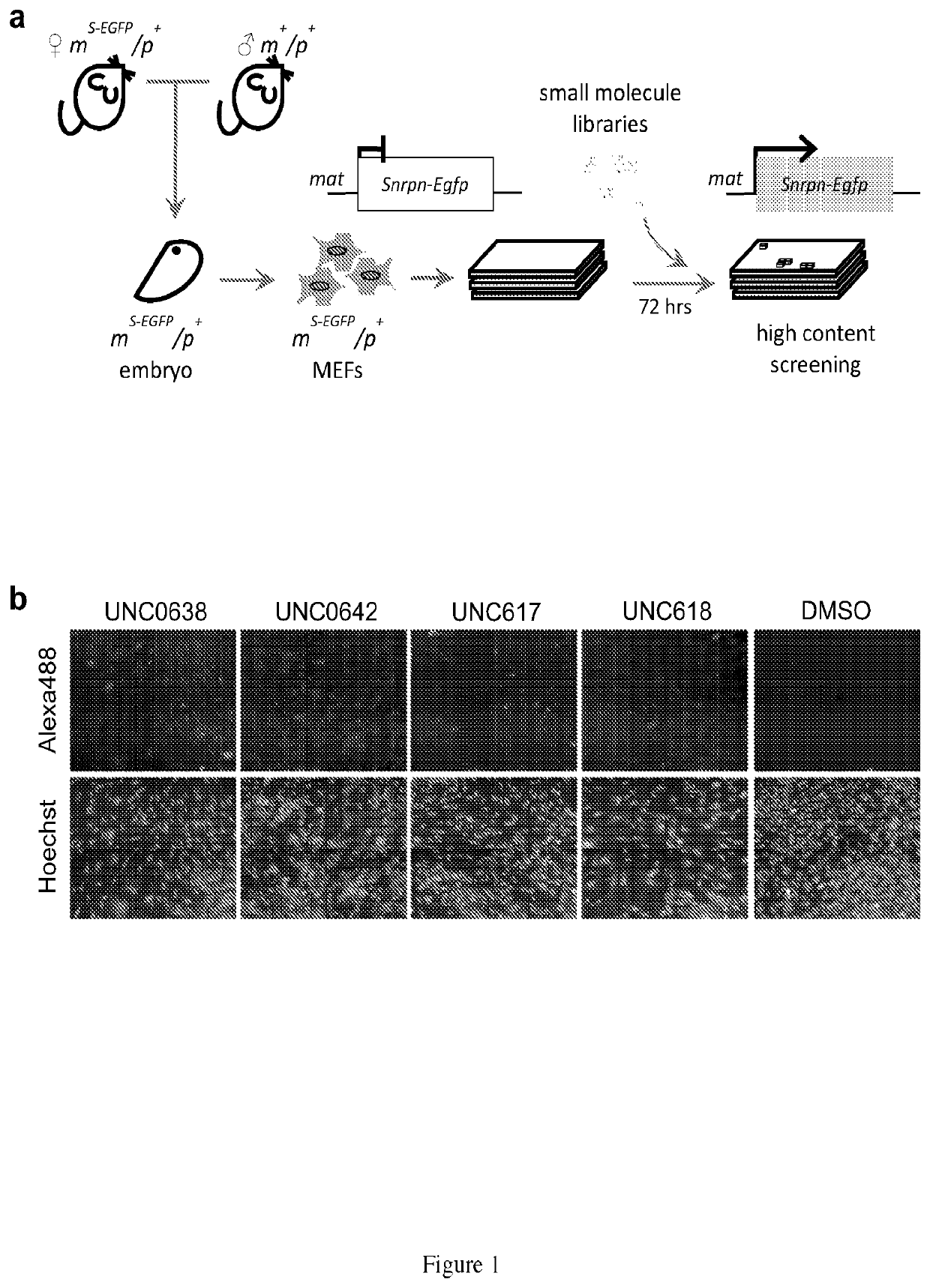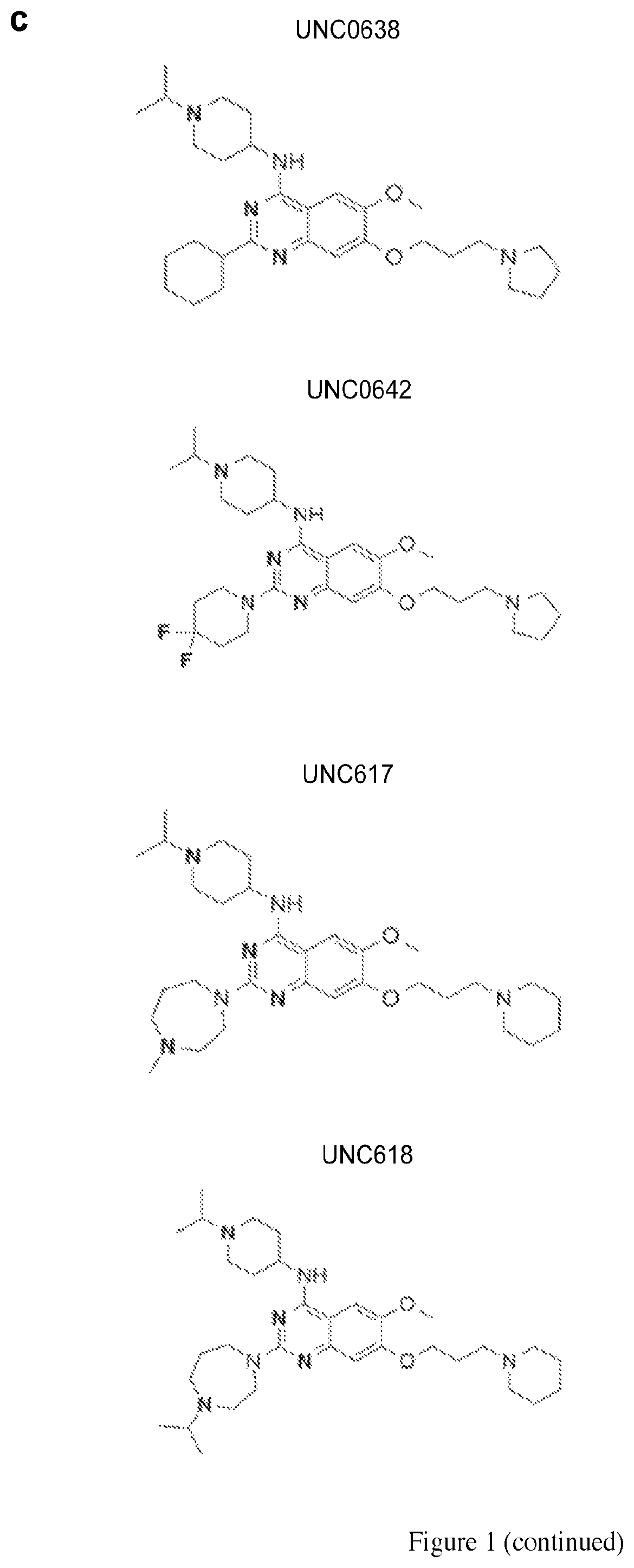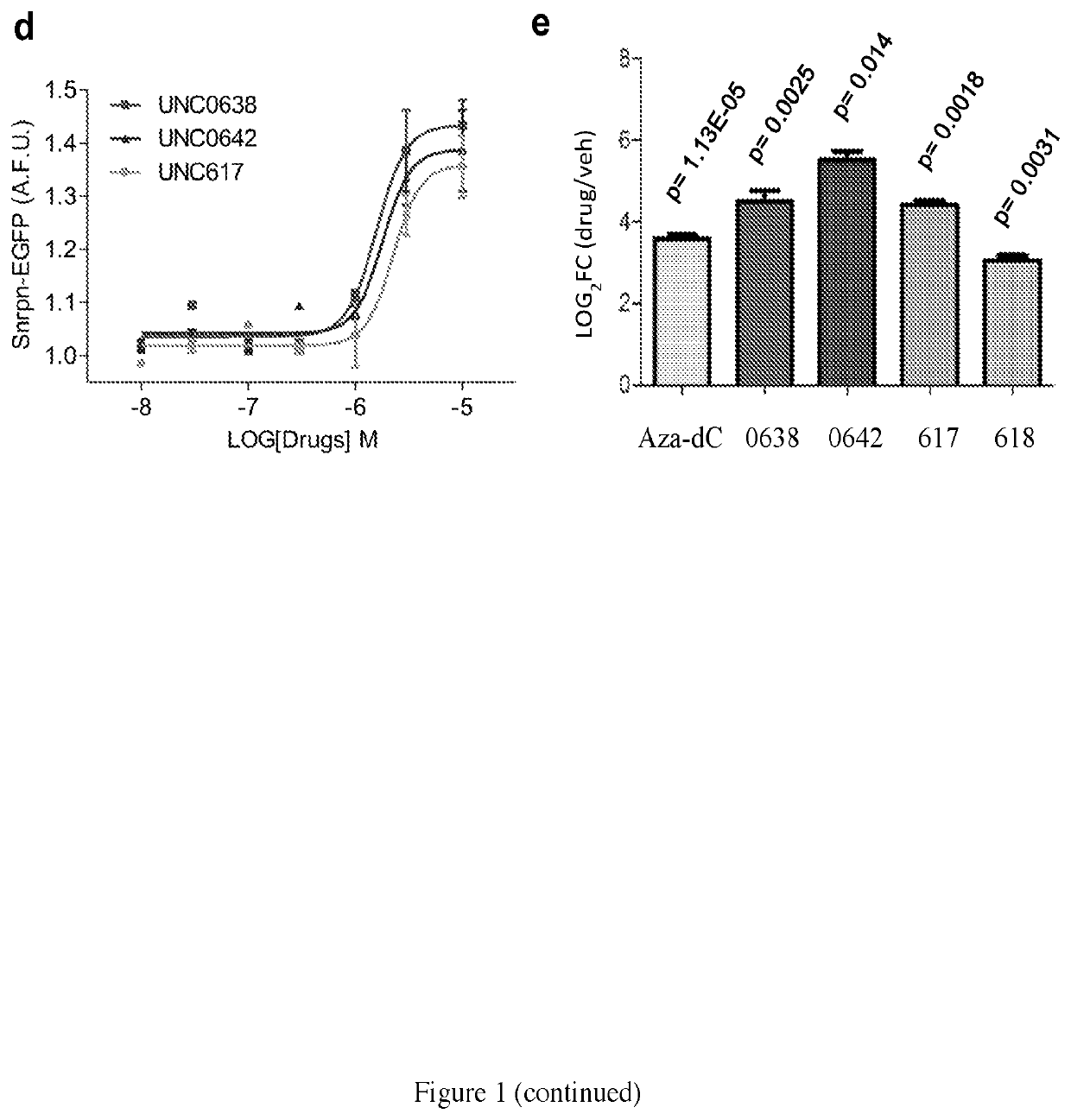Compositions and methods for the treatment of Prader-Willi syndrome
a technology of prader-willi syndrome and compositions, applied in the field of neurology, can solve problems such as not being reported in vivo
- Summary
- Abstract
- Description
- Claims
- Application Information
AI Technical Summary
Problems solved by technology
Method used
Image
Examples
example 1
Identification of Small Molecules that Activate the Expression of SNORD116 from the Maternal Chromosome
[0143]It is not feasible to design a screen for noncoding RNA. Alternatively, SNRPN / Snprn is paternally expressed but maternally silenced in all human and mouse tissues. The allele-specific expression of human SNRPN is regulated by the PWS-IC, which also controls the expression of host transcripts for SnoRNAs, including the SNORD116 cluster between SNRPN and UBE3A. see Le Meur, E. et al., Dev. Biol. 286, 587-600 (2005). Thus, the Snrpn-EGFP fusion protein (hereafter S-EGFP) was used as a marker for high content screening (HCS). It was determined that small molecules that can unsilence S-EGFP would also be effective in reactivating the host transcript of SNORD116. Thus, mouse embryonic fibroblasts (MEFs) were established from mice carrying S-EGFP inherited either maternally (mS-EGFP / p+) or paternally (m− / pS-EGFP) as previously described by Wu, M. Y., et al. Genes &development 20, 28...
example 2
Synthesis of Compound which Activates the Expression of S-EGFP in mS-EGFP / p+ MEFs
[0145]N-(1-isopropylpiperidin-4-yl)-6-mehtoxy-2-(4-methyl-1,4-diazepan-1-yl)-7-(3-(piperidin-1-yl)propoxy) quinazolin-4-amine, named UNC617, was synthesized as follows and as represented in FIG. 3. A mixture of compound 1 (70 mg, 0.15 mmol), 1-methyl homopiperazine (34 mg, 0.30 mmol), and TFA (46 μL, 0.60 mmol) in i-PrOH (0.2 mL) in a sealed tube was heated by microwave irradiation to 160° C. for 15 min. After concentration in vacuo, the crude product was purified by preparative HPLC with a gradient from 10% of MeOH in 0.1% TFA in H2O to 100% MeOH. The resulting product was basified with saturated aq. NaHCO3 and extracted with CH2Cl2 to afford the title compound as a yellow solid (60 mg, 0.11 mmol, 72% yield). 1H NMR (400 MHz, CDCl3) δ 6.87 (s, 1H), 6.72 (s, 1H), 5.00 (d, J=8.0 Hz, 1H), 4.11(t, J=6.0 Hz, 2H), 4.05-4.01 (m, 1H), 3.96-3.94 (m, 2H), 3.87-3.83 (m, 5H), 2.89 (app. d, J=12.0 Hz, 2H), 2.77-2.7...
example 3
Examining Effects of Unsilencing Molecules in a PWS Patient Driven Cell Model
[0147]A skin fibroblast cell line containing a typical large (5-6 Mb) deletion of the paternal copy of the 15q11-q13 region was used to determine if UNC0638 and UNC0642 could depress the maternal genes in a patient-driven cell model of PWS. FIG. 4a represents a schematic of genomic organization at the human chromosome 15q11-q13 region imprinting center. Because imprinting of SNPRN is known to be ubiquitous, the G9a-inhibitor effect on its activation is expected to be representative of all tissues and cell types.
[0148]For cell-based studies as represented in FIG. 4b, UNC0638 was chosen due to its high potency and selectivity, low toxicity, and thoroughly characterized cellular activity. UNC0638 treatment (1-4 μM) effectively activated SNRPN and SNORD116 transcripts, as assessed by RT-PCR (FIG. 4c) with a minimal cytotoxicity (FIG. 5). PWS fibroblasts treated with 4 μM UNC0638 expressed approximately 30% of n...
PUM
| Property | Measurement | Unit |
|---|---|---|
| molecular weight | aaaaa | aaaaa |
| concentration | aaaaa | aaaaa |
| flow rate | aaaaa | aaaaa |
Abstract
Description
Claims
Application Information
 Login to view more
Login to view more - R&D Engineer
- R&D Manager
- IP Professional
- Industry Leading Data Capabilities
- Powerful AI technology
- Patent DNA Extraction
Browse by: Latest US Patents, China's latest patents, Technical Efficacy Thesaurus, Application Domain, Technology Topic.
© 2024 PatSnap. All rights reserved.Legal|Privacy policy|Modern Slavery Act Transparency Statement|Sitemap



